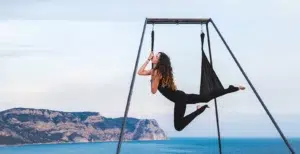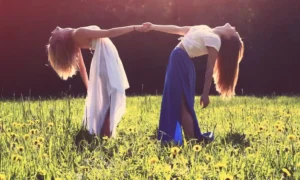It is well known that the Oscar Awards, the most glamorous and well-known awards of the seventh art, recognize excellence and talent in various categories such as acting, directing, etc … in which elements such as dance can have a significant influence.
Although there is no specific category for it, it is undeniable that the magic of movement can play a fundamental role in the impact and depth of a narrative.
Dance in film transforms stories into unforgettable experiences, bringing emotion to life through the body on stage. Do you think this was the case in this 97th edition of the Oscars 2025?
As lovers of the seventh art we love to see that dance and cinema make such a good couple as Ginger Rogers and Fred Astaire. Yesterday Sunday took place the Oscars 2025 awards gala and as always dance played an important role in some of the nominated films, as well as on the stage of the Dolby Theatre. One of the most glamorous and memorable moments of the night was the dance of the wonderful Margaret Qualley in a musical number in honor of the James Bond saga.
Importance and Evolution of Dance in Cinema
Dance has played an essential role in cinema since its beginnings.
Beyond being a mere form of entertainment, this artistic expression has profoundly influenced film narrative, character development and visual aesthetics.
Over the decades, dance in film has evolved, reflecting social, cultural and technological changes.
Stages:
The Era of Silent Cinema
Silent films, which dominated the industry from the late 19th century until the late 1920s, used dance as a form of visual communication. Actors such as Charlie Chaplin incorporated elements of dance into their movements, creating comedy and emotion without the need for words..
Dance numbers in silent films were often elaborate and meticulously choreographed to capture the audience’s attention and tell stories through movement.

The Rise of Musicals in the 1930s and 1940s
With the advent of talkies, musicals became a dominant genre. Films such as “42nd Street” (1933), “Top Hat” (1935) and “The Wizard of Oz” featured dance numbers that fused the talents of dancers and choreographers with the magic of film.
Fred Astaire and Ginger Rogers, one of the most iconic dance couples of this era, epitomized elegance and grace. These films not only showcased technical skills, but also used dance and music to develop plots and relationships between characters.
As a result we have unforgettable musicals, movies, plays… that have become timeless classics in our popular culture.

The Rise of Musicals in the 1930s and 1940s
The Golden Age of Hollywood
During the 1950s and 1960s, dance showed that it could be a vital and organic component of cinematic storytelling, not just an additional element, with productions such as “Singin’ in the Rain” (1952) and “West Side Story” (1961).
Gene Kelly, known for his innovation and energy, transformed cinematic dance into a dynamic art form in which his choreography combined technique, expression and narrative.
“West Side Story” is a prime example of how dance can be a powerful tool for telling complex stories and addressing social issues, such as gang rivalry and forbidden love.

The Independent Film Revolution and Genre Diversity
The 1970s brought with it a diversification in the way dance was represented in film.
Films such as “Saturday Night Fever” (1977) reflected disco culture and urban life, showing how dancing could be a form of escape and self-expression.
In the 1980s and 1990s, the popularity of music videos and the influence of MTV brought dancing to a new level of visibility, inspiring films such as “Flashdance” (1983) and “Dirty Dancing” (1987).

Contemporary Cinema and the Fusion of Styles
In the 21st century, cinema has continued to explore and expand the boundaries of dance. Films such as “Step Up” (2006) and “La La Land” (2016) have shown that dance is still relevant.
Technology and visual effects have enabled the creation of dance scenes that would have been impossible in previous decades, while globalization has introduced a greater diversity of dance styles into mainstream cinema.
In short, the seventh art will continue to evolve relentlessly at the pace set by social and cultural changes, reflecting concerns, trends, innovations… And it will always resort to dance, either as a protagonist or enhancing emotions, making us dream and giving us many other unforgettable moments.






